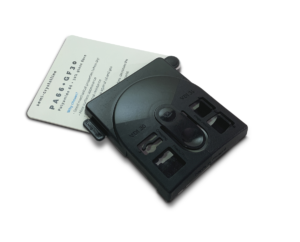
PA6 and PA66 are very similar materials, also when reinforced. Let’s handle PA6+GF first and then see the difference to PA66.
PA6+GF
Why choose?
- Commonly used, relatively inexpensive material, easy to find references.
- Good choice if your product is exposed to elevated temperatures, rattling, oil, and dirty hands.
- Nice surface finish (on other than polished surfaces).
Why not choose it?
- PA6 absorbs moisture which might decrease its strength and modulus of elasticity almost by half.
Typical applications:
- Different types of levers that require high strength and stiffness
- Boat cleats
- Garden tool handles
PA66+GF
Glass-reinforced polyamide is a very common material in the field of machine design. The Plasticprop sample represents PA 66 – a variety that withstands heat somewhat better than PA 6, for example. However, the difference is small and would hardly be noticeable even if there were two different samples. The housings of electric hand tools are often made of a material similar to that of the sample.
Why choose (over PA6+GF)?
- PA66 offers slightly better thermal resistance than PA6.
- PA66 absorbs less moisture than PA6.
Why not choose?
- Slightly higher price. If PA6+GF fulfills your requirements it does not make sense to pay more.
- Moisture absorption problem is not fully eliminated by choosing PA66 instead of PA6. You might consider using PBT+GF instead.
Typical applications:
- Spatulas and other kitchen utilities
- Bodies of electric tools
- Biking gear
- Automobile parts
By examining the Plasticprop sample made of PA66 + 30 GF, you can draw for example the following conclusions:
- Spark-eroded surfaces are satin-like. Some glass can be distinguished on the polished surface.
- The sample is slightly warped and the corner effect is considerable. The lower edge is also somewhat wavy. In case of glass-reinforced materials, small distortions must be considered in the design.
- When comparing the sample with a respective glass-reinforced PBT sample, the dimensions, straightness, and stiffness are very similar.
- You can also evaluate the stiffness by knocking on the sample’s edge. Reinforced PA and PBT sound approximately the same (unless the sample kit has been stored outdoors, for example, and PA has already absorbed some moisture). If the PA+GF sample is soaked in warm water for a couple of hours, the sound will be substantially lower than that of PBT+GF.
- Spark-eroded surfaces are surprisingly scratch-free.
- If the sample is heated next to a glass-filled PBT sample, it can be noticed that PA+GF maintains its stiffness slightly better.